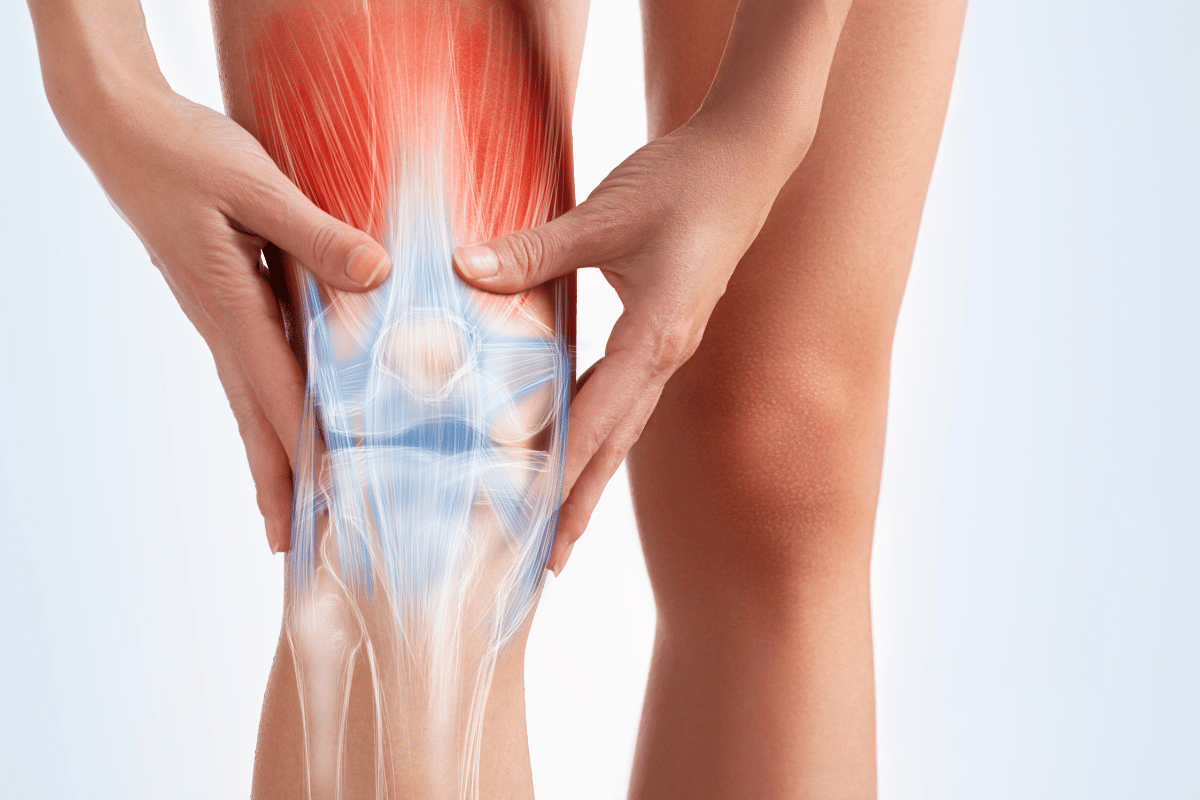Understanding Your Knee Pain: A Guide With Knee Pain Location Chart

The knee joint is a multifaceted structure that supports heavy loads and enables numerous types of movement. However, this same complexity also subjects the knee to any number of different types of injury and condition that can be painful. Knee pain can be a disabling condition, restricting your movement and interfering with your overall health. If you are experiencing knee pain, determining its location is the first step toward learning what might be causing it and getting an effective treatment. A knee pain location chart can be helpful for this purpose.
Table of Contents
ToggleKnee Pain Location Chart: Understanding Where it Hurts
A knee pain location diagram splits the knee into distinct areas, each associated with respective underlying anatomical components and sources of pain. Below is an analysis of knee pain locations and likely causes:
Front of the Knee
Pain Above the Kneecap
This location contains the quadriceps tendon, which attaches the muscles of the quadriceps in the thigh to the kneecap. Pain located here may be due to quadriceps tendinitis, an overuse syndrome found among sports participants. Arthritis or bursitis, an inflammation of fluid-filled sacs within the joint, may also produce pain here.
Pain Under the Kneecap
This may be tendinitis of the patellar, or runner’s knee or jumper’s knee, caused by swelling of the tendon joining the kneecap to the shin. Patellofemoral pain syndrome (PFPS), or runner’s knee, produces pain on or about the kneecap from faulty tracking of the kneecap within the joint groove.
Inner Knee
Pain on the Inner Side of the Knee
The medial collateral ligament (MCL) supports the knee on the inside. Pain with swelling and tenderness in this region indicates an MCL sprain or tear, which usually arises from a blow to the knee that causes a sudden, inward pressure on the knee.
Pain Within the Knee and Popping Sensation
This may suggest a tear of the medial meniscus. The meniscus are C-shaped pieces of cartilage that serve as shock absorbers between the knee bones. A tear can be caused by twisting or by forced movement.
Outer Knee
Pain on the Outer Side of the Knee
The lateral collateral ligament (LCL) supports the knee on the lateral (outer) side. Tenderness or pain in this region, together with instability, may be an LCL sprain or tear, usually resulting from an outward pressure on the knee.
Outer Knee Pain with a Clicking Sensation
This could suggest a tear in the lateral meniscus, which may be caused by activities that involve twisting the knee.
Behind the Knee
Pain on the Back of the Knee
The posterior cruciate ligament (PCL) keeps the shinbone from moving too far backward. Discomfort in this area, particularly after a blow to the knee, may be a tear of the PCL.
Pain Behind the Knee with a Bulging Mass
This could be a Baker’s cyst, a sac filled with fluid that forms behind the knee as a consequence of arthritis or tear in the meniscus.
Top of the Knee
Pain at the Top of the Knee
This region contains the bursae, sacs filled with fluid that pad the joint. Inflammation of these bursae, or bursitis, may result in pain and swelling here.
Inside the Knee
General Knee Pain
This could indicate various conditions, including osteoarthritis, a degenerative joint disease that causes cartilage breakdown, or loose bodies within the joint caused by cartilage or bone fragments.
Understanding Pain Location: Why It’s Not Always a Clear Diagnosis
Where the pain is located can be helpful to know, but it’s also important to note that it’s never an absolute diagnosis. The same location could be due to different causes. Sometimes pain can radiate to an adjacent location, which can make it difficult to determine the source.
Consulting a Healthcare Professional
If you have knee pain, wherever it’s located, it’s important to see a health professional for an accurate diagnosis and treatment regimen. He or she will perform a physical exam, ask you for your medical and symptom history, and may order imaging studies, such as an X-ray or an MRI, for further examination. It’s necessary to have an early diagnosis and treatment to have the best chance for recovery, and to avoid long-term complications.
Knee pain may be debilitating, but knowing the varied locations it can occur and using a knee pain location chart as a reference can provide insight into causes. Keep in mind, it is only a starting reference, and seeing a health professional is important for correct diagnosis and treatment. Care and pain relief can be achieved, and you can return to an active, pain-free way of life.
Published by Amanda Mills
I'm Amanda Mills, Senior Content Strategist, and I've been shaping digital marketing narratives since 2011. With a master’s degree in Digital Marketing and a bachelor’s in Media Studies, I specialize in blending creative storytelling with data-driven strategy to create content that not only engages but delivers results. View more posts







